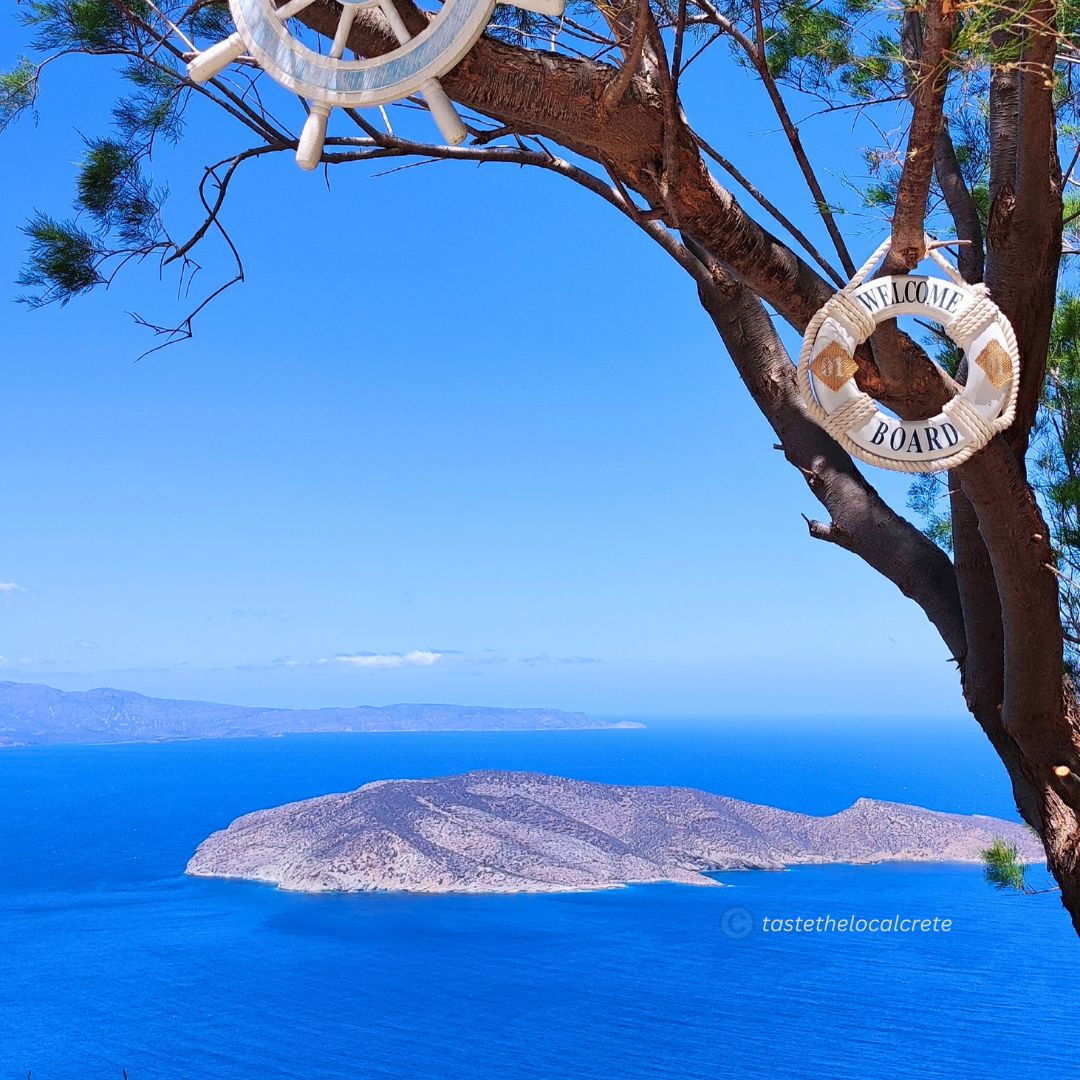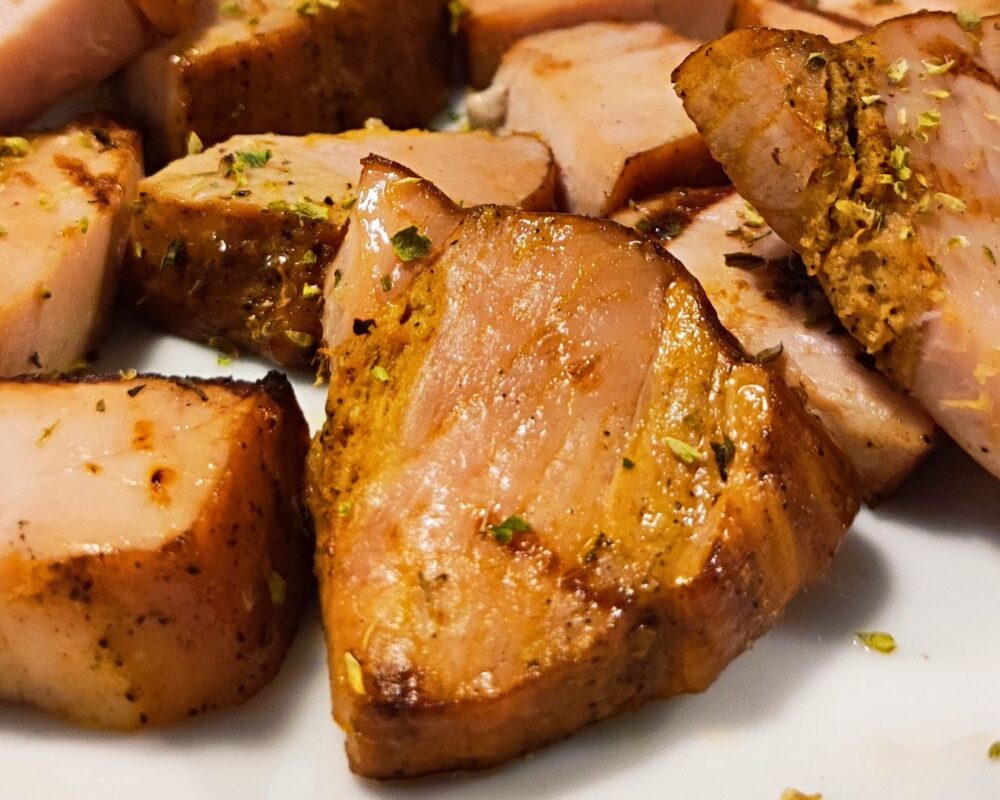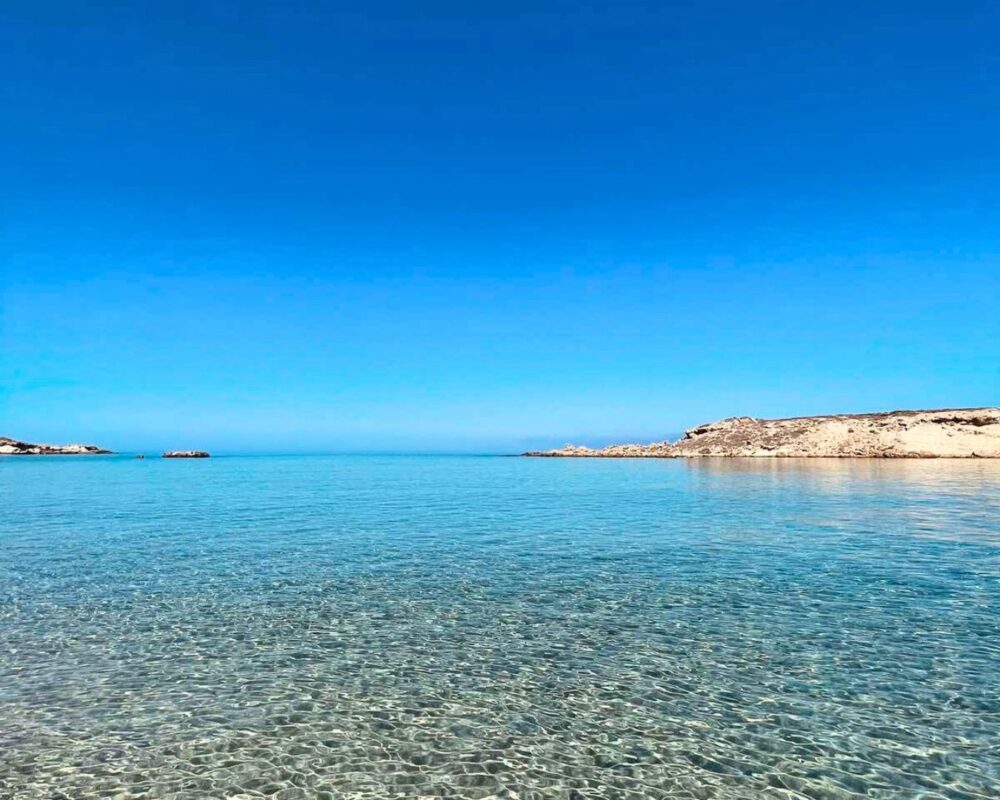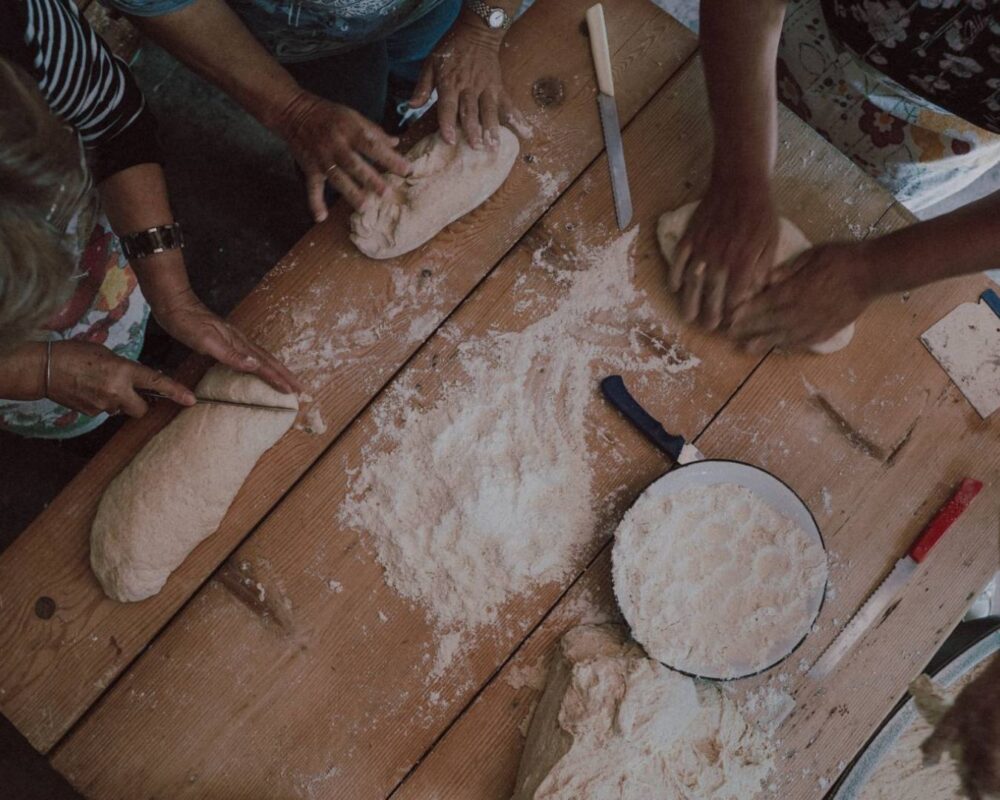
So you’re planning a trip to Greece and wondering if Crete is really that different from the mainland?
Short answer: absolutely.
Crete stands apart from the rest of Greece in many meaningful ways. This Cretan guide explores what makes Greece’s largest island unique – from its generous food portions to its exceptional hospitality.
The island of Crete feels like a continent unto itself, with diverse landscapes, distinct cultural traditions, and culinary practices that set it apart from mainland Greece. These distinctions make Crete worth exploring beyond the typical tourist spots, which is why self-guided itineraries can help you discover the authentic island experience.
Unlike mainland Greece, Crete developed its own distinct identity through centuries of relative isolation, unique historical influences, and the island’s varied geography. When you visit Crete, you’re not just experiencing another part of Greece – you’re discovering an island with its cultural ecosystem.
Cook the Cretan way! Our digital Cretan guides help you experience the less-traveled side of Crete, bringing you closer to the authentic island experience. Use them on your smartphone, tablet, or laptop as you explore this unique island.
Get your free Cretan recipe guide! Happy cooking!

7 Things That’ll Surprise You
1. Generous Food Portions
When dining in Crete, expect plates filled to the brim. Cretans serve food in portions that often surprise mainland Greeks and tourists alike. This generosity reflects the island’s abundance and the locals’ desire to share their bounty with visitors.
Unlike many tourist destinations where portions shrink while prices grow, Cretan tavernas maintain their tradition of overflowing plates regardless of whether you’re a local or a visitor.
A single appetizer might be enough to feed two people, while main courses often come with enough food for leftovers. This approach to serving stands in contrast to the more measured portions you might find in Athens or other Greek cities.
The Cretan guide to dining includes this important tip: order fewer dishes than you think you need, as the generous portions will likely satisfy even hearty appetites.

Your Cretan guide should include visits to local markets where you can see this agricultural bounty firsthand
2. A Self-Sufficient Agricultural Powerhouse
Crete functions as a self-sufficient ecosystem when it comes to food production. The mild climate conditions along with the fertile soil, allow for intense agricultural activities year-round. This combination creates an ideal environment where crops flourish across the island’s varied landscape.
This agricultural richness stems from:
☀️Diverse microclimates allow year-round growing seasons
🌱Fertile soil enriched by centuries of careful farming
👩🌾 Traditional farming methods passed down through generations
🌾Varied terrain supporting different types of agriculture
🌿An abundance of plant varieties growing only in Crete

Crete produces almost everything it eats
What makes Crete truly remarkable is its botanical diversity. The island counts approximately 1,600 different kinds of plants and wild herbs, with almost 170 of them being endemic (growing only on this island).
This extraordinary plant diversity serves as natural feed for goats and sheep grazing freely on the mountains, contributing to the exceptional quality of Cretan dairy products and meat. The unique flora also contributes to the distinct flavors of Cretan products, from honey infused with rare mountain herbs to olive oil with characteristic aromas.
From the mountain plains where cereals grow to the coastal areas perfect for citrus and olive trees, Crete produces an astonishing variety of foods. The island’s self-sufficiency is remarkable considering its size, creating a food ecosystem that’s largely independent from mainland supply chains.
Travel Tip: Want to see this bounty yourself? Hit up a local food market. You’ll find mountain herbs, honey, fresh cheeses, and vegetables that don’t exist anywhere else.

3. Cretan Cuisine Isn’t Just “Greek Food” – It’s Its Own Thing
The Cretan diet forms its chapter in Greek cuisine, with practices dating back thousands of years. Ever heard of the Mediterranean diet? Well, Crete invented the original version. While often lumped with the “Mediterranean diet,” the traditional Cretan diet stands apart with distinct patterns and practices that nutritional researchers increasingly recognize as its category.
Traditional Cretan cuisine includes many gluten-free, dairy-free, and plant-based options, making it adaptable to various dietary needs.
What makes Cretan cooking unique is its straightforward approach:
✅Focus on seasonal ingredients
✅Simple preparation methods that highlight natural flavors
✅Minimal processing (fresh is best)
✅Emphasis on fresh herbs and greens
✅Liberal use of olive oil (a lot of extra olive oil!)
Real talk: A single ingredient like zucchini appears in multiple forms throughout the season. First, as tender vegetables with blossoms stuffed, then mature in stews. It’s resourceful cooking at its finest.
Did you know that Crete was officially awarded the European Region of Gastronomy 2026 title?

Cretan cuisine relies heavily on seasonality, making smart use of a few local ingredients across multiple recipes. This adaptability showcases the ingenuity of island cooks who created varied dishes from limited seasonal resources. At its core, Cretan cuisine is humble, focusing on honest flavors rather than complex presentations.
The island’s culinary philosophy centers on highlighting the natural flavors of fresh ingredients rather than masking them with complex techniques or heavy sauces. A single ingredient like zucchini might appear in multiple forms throughout the season; first as tender vegetables with their blossoms stuffed, then mature in stews, and finally, the seeds preserved for the next year.
Dishes like dakos (barley rusk topped with tomato and cheese), gamopilafo (wedding rice), and kalitsounia (sweet or savory pastries) showcase distinct local flavors you won’t find elsewhere in Greece. Wild greens (horta) feature prominently in the Cretan diet, with locals knowing exactly when and where to forage for these nutritious plants.
The difference from mainland Greek food? More olive oil, more herbs, less meat, and way more creativity with vegetables and pulses.
Download your free Cretan guide now to cook the Cretan way!

4. Olive Oil Here is Liquid Gold (And There’s a Lot of It)
Olive oil in Crete transcends its role as a cooking ingredient. The ancient olive trees scattered across the island represent living history, with some specimens dating back 2,000-3,000 years. These ancient trees continue producing exceptional oil, connecting modern Cretans to their ancestors.
The Minoan civilization (3,000 B.C.-1,700 B.C.), centered on Crete, incorporated olive oil into its economy, religious practices, and daily life. Archaeological findings show elaborate storage systems for olive oil and evidence of its use in ceremonies and trade. This deep connection continues today, with olive cultivation practices passed down through generations.
Fun fact: There are roughly 40 olive trees for every person living in Crete.
Let that sink in for a moment.
A quarter of the entire island is covered in olive trees, some of which are 2,000-3,000 years old and still producing. These aren’t museum pieces; they’re working trees connecting modern Cretans to their Minoan ancestors.
The Olive Oil Numbers That’ll Shock You:
👉30 million olive trees across the island
👉 25 liters per person annually (Cretans consume more olive oil per person than nearly anywhere else in the world)
👉4,000+ years of continuous olive cultivation
👉Higher polyphenol content than most commercial oils (rich in antioxidant properties)

True Cretan extra virgin olive oil goes beyond the standard definition of low acidity. Four key factors contribute to its exceptional quality:
- Cultivation methods that respect the trees and the environment
- Harvesting techniques that pick olives at optimal ripeness
- Pressing processes that extract oil without excessive heat
- Proper preservation methods that maintain quality
These factors together produce extra virgin olive oil high in polyphenols with powerful antioxidant properties and rich, spicy aromas. The complexity of flavors in authentic Cretan olive oil reflects the island’s varied microclimates and traditional production methods.
When you travel through Crete, you’ll notice olive groves defining the landscape from coastal plains to mountain slopes, forming a living museum of agricultural heritage. Many families maintain their small groves, harvesting olives each autumn in a social tradition that brings together multiple generations.]
Travel tip: Your Cretan guide should include visiting an olive mill during harvest season to witness the transformation of olives into liquid gold; an experience that explains why Cretans view olive oil as more than just food.

5. Unmatched Hospitality
The hospitality you’ll experience in Crete goes beyond what you might encounter elsewhere in Greece. Cretans treat guests like family, often:
🍰Offering free desserts or fruits after meals
🤗Greeting you even if they don’t know you
🥘Sharing family recipes and stories
🧭Providing directions that include personal recommendations
🤩Gifting homemade products (olive oil, wine, tsikoudia, carob products)
The Cretan concept of “philoxenia” (love of strangers) isn’t just practiced; it’s ingrained in daily life.
In Cretan villages, doors remain unlocked, and an unexpected visitor becomes a cause for celebration rather than an intrusion. Taverna owners might pull up a chair to share a glass of raki with you, treating you more as a guest in their home than as a customer.
This genuine warmth extends beyond tourist areas and commercial establishments. Ask for directions? You might get personally escorted. Show interest in local customs? Prepare to be invited to family celebrations. This isn’t tourist theater; it’s authentic cultural values that persist despite mass tourism.
A true Cretan guide would be incomplete without mentioning that this hospitality isn’t a performance; it represents authentic cultural values that persist despite mass tourism. Finding these authentic experiences becomes easier when you venture away from major resorts using self-guided itineraries that bring you to smaller villages and family-run businesses.

6. Wine Varieties You’ve Never Heard Of (And Can’t Find Anywhere Else)
Pop quiz: How many indigenous Greek grape varieties can you name?
If you said Assyrtiko or Agiorgitiko, you’re thinking mainland. Crete has 11 indigenous grape varieties that produce wines unlike anything else in Greece.
The island boasts a 4,000-year-old wine-making tradition, contributing significantly to Greece’s overall wine production. This ancient heritage continues today across approximately 60 wineries found throughout the island.
The island’s winemaking tradition stretches back to Minoan times, with archaeological evidence showing sophisticated wine production systems. Clay wine presses, storage jars, and wine-related imagery in Minoan art confirm this deep viticultural history.
Here’s why Cretan wines taste different:
- Fertile soil rich in minerals
- Mild climate conditions
- High altitude of Cretan vineyards
- Cool sea breezes moderate temperatures
These factors together create wines with distinctive aromas and character that reflect their unique terroir.
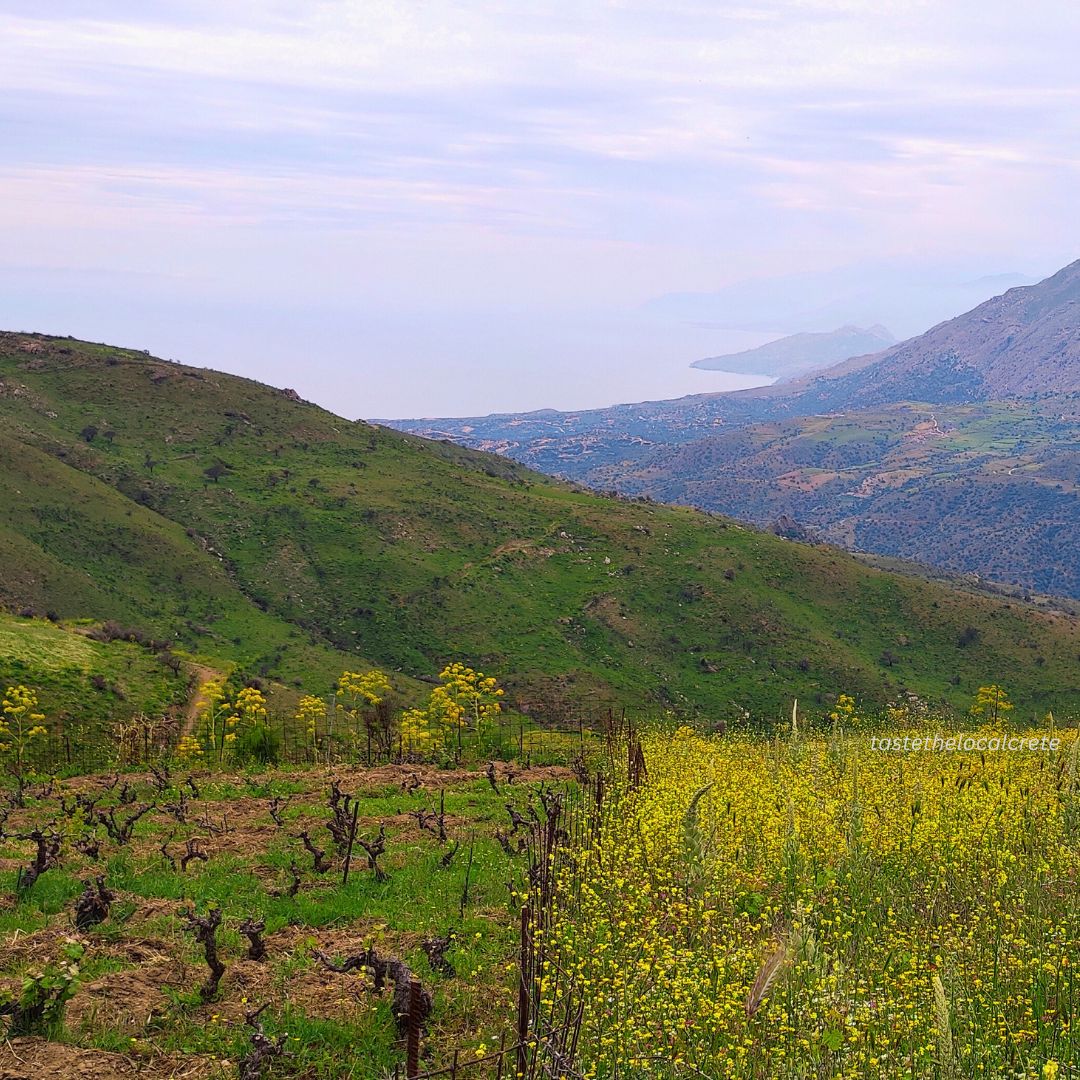
Cretan White Wine Varieties Worth Knowing:
– Vidiano: Produces aromatic whites with hints of peach and apricot
– Vilana: Creates fresh, citrusy wines perfect with seafood
– Thrapsathiri: Offers medium-bodied wines with complex fruit flavors
– Dafni: Named for its bay leaf aroma, produces unique herbal whites
– Plyto: Creates light, refreshing wines with crisp acidity
– Malvasia di Candia: Historically famous sweet wine now being revived
Red Varieties That’ll Change Your Mind About Greek Wine:
– Kotsifali: The backbone of many Cretan reds, offering spicy notes
– Mandilari: Known for deep color and tannins, often blended
– Liatiko: Creates both dry and sweet wines with elegant character
– Romeiko: Traditional variety making a comeback with modern winemakers
– Plyto: Versatile grape used in both white wines and some blends
Travel Tip: Many small vineyards welcome visitors for tastings. Skip the big tourist wineries and find the family operations; that’s where you’ll discover wines that’ll spoil you for everything else.

7. More Cheese Varieties Than Any Other Greek Region
Crete boasts 14 different cheese varieties—more Protected Designation of Origin (PDO) cheese varieties than any other Greek region.
Why do these cheeses taste so unique? The secret is in the milk. Sheep and goats graze on Crete’s unique flora – those 170 endemic plants I mentioned earlier. This gives the milk (and therefore cheese) flavors that literally can’t be replicated anywhere else.
Graviera Kritis (PDO) stands as the flagship cheese of Crete, representing the island’s dairy tradition at its finest. According to Taste Atlas and travelers from around the world, the best cheese recipe is “saganaki”, a Greek meze-style dish made with fried cheese in a pan.
The term “saganaki” refers to a variety of appetizers cooked in a small, round pan (sagani or saganaki) that has two thick handles on either side.
While saganaki can be made with kefalotyri or feta, the hard-textured graviera from Crete offers perfect melting properties and rich flavor.
Local tip: For extra flavor, try it with a squeeze of lemon!
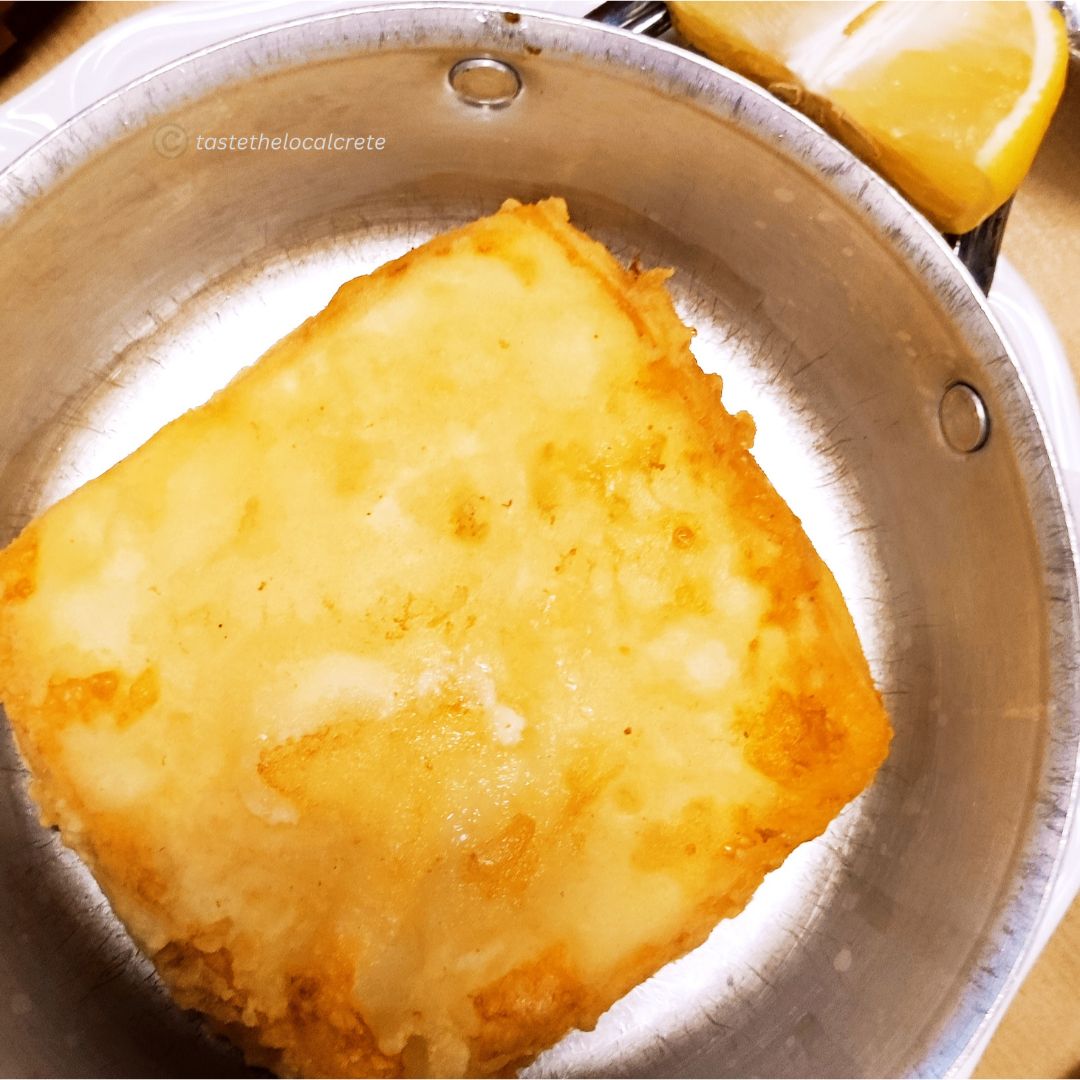
A good Cretan guide should include visits to small cheese workshops where you can taste the best artisanal, regional cheese
Must-Try Cretan Cheeses:
– Xygalo: A PDO cream cheese produced only in the area of Sitia in Lassithi (eastern Crete), with a delicate sour flavor that pairs perfectly with dakos salad, fried potatoes, omelets, and salads
– Xinomizithra Kritis (PDO): A soft, sour cheese used in many dishes and pastries
– Anthotyro: A mild, ricotta-like cheese enjoyed fresh or aged
– Pichtogalo Chanion: A soft, creamy cheese from Chania with PDO status
– Kefalotyri: A hard, salty cheese perfect for grating
– Malaka: A stretchy cheese used in specialized dishes
– Staka: A buttery spread made from sheep’s milk cream
The production of these cheeses follows traditional methods, with many small producers still making cheese by hand using techniques passed down through generations. The distinct flavors come from the milk of animals grazing on Crete’s unique flora, giving each cheese characteristics that can’t be replicated elsewhere.
Cretan cheese appears throughout local cuisine—stuffed in pastries, crumbled over salads, melted into pies, or simply enjoyed with honey as dessert. Unlike mainland Greece, where feta dominates, Crete offers a wider variety that showcases the island’s dairy craftsmanship.
Travel Tip: A good Cretan guide should include visits to small cheese workshops where you can taste the best artisanal, regional cheese varieties directly from local sources.

Frequently Asked Questions
Which month is best to visit Crete?
Early summer (May-June) and late summer (September-October) offer ideal conditions with pleasant temperatures and fewer crowds.
These shoulder seasons provide the perfect balance of good weather and space to enjoy the island. Temperatures typically range from 18-25°C (65-77°F), ideal for exploring archaeological sites, hiking, and enjoying beaches without the intense summer heat.
April-June – Perfect temperatures (20-25°C) for exploration and hiking, with spring flowers in bloom and few tourists. Water may still be cool for swimming.
July-August – Peak season brings warmest temperatures (often 30-35°C) and warmest sea temperatures. Even then, Sitia remains notably less crowded than western Cretan destinations.
September-October – Perhaps the ideal time for traveling in Crete’s eastern regions. The sea remains warm from summer heating, temperatures moderate, and tourist numbers continue to decrease.
November to March – Many smaller establishments close for the season, but basic services continue. Winter visitors experience the most authentic local life and occasional rainy days mixed with surprising sunshine.
Why are food portions so much larger in Crete?
It reflects the island’s agricultural abundance and deep cultural tradition of hospitality. Cretans view sharing food generously as a way of showing respect and welcome to guests.
Can I find these unique Cretan products outside the island?
Some Cretan olive oil and wine are exported, but many products (especially artisanal cheeses and local varieties) are only available on the island due to small production scales.
What’s the best way to experience authentic Cretan culture?
Rent a car and venture beyond the tourist zones. The real magic happens when you drive to mountains and fishing villages where you’ll taste the best Cretan foods cooked with local products straight from the villages.
With a car, you can reach incredible viewpoints (especially perfect for sunset hours), discover amazing beaches beyond the popular ones, and experience the calm vibes of local Cretan life. Village tavernas, small producers, and family-run businesses away from the coast offer the most authentic experiences you can’t get from organized tours. Check out our digital self-drive Cretan guides!
What makes Cretan beaches special compared to other Greek islands?
Crete’s beach diversity is unmatched, while driving through rocky mountain routes, you’ll suddenly discover incredible bays with crystal-clear waters. The island offers every type of beach imaginable: sandy, pebble, rocky, shallow family-friendly waters, and deep blue diving spots.
Don’t think it’s just about the famous Elafonissi; the entire southern coast is covered with amazing beaches from west to east. You’ll find tiny secluded bays perfect for couples, long sandy stretches with shallow waters for families, and small pebble beaches where you can relax until sunset.
This variety means you can experience a different beach every day without leaving the island.
How many days in Crete are enough?
Crete feels like exploring a continent rather than just an island. The island is divided into four prefectures, and driving routes can be quite long because they wind through mountains and dramatic gorges.
If you want to enjoy Crete at your own pace, plan at least 5-7 days for each prefecture, combining longer stays with short day trips. This gives you time to experience the diverse landscapes, taste regional specialties, and soak in the authentic hospitality without feeling rushed from place to place.
Our digital Cretan guides drive you to experience the less-traveled side of Crete
Experience Authentic Crete With Our Digital Cretan Guides
To truly appreciate these unique aspects of Crete, you need to venture beyond tourist hotspots. Self-guided digital itineraries allow you to explore at your own pace, discover authentic tavernas, meet local producers, and experience genuine Cretan hospitality.
Our digital Cretan guides help you experience the less-traveled side of Crete, bringing you closer to the authentic island experience. Use them on your smartphone, tablet, or laptop as you explore this unique island:
👉Visit family-run olive mills where production methods date back generations
👉Discover small village bakeries making traditional breads and pastries
👉Find local, rustic tavernas where recipes haven’t changed in decades
👉Explore vineyards growing Cretan grape varieties
👉Experience authentic rural hospitality away from commercial tourism
These authentic experiences connect you with the other side of Crete—a place that feels distinct from mainland Greece in countless meaningful ways.
FREE LOCAL'S GUIDE TO CRETE
Get my free 25-page Cretan guide with insider tips and answers to your most common questions. Written by someone who actually lives here.


